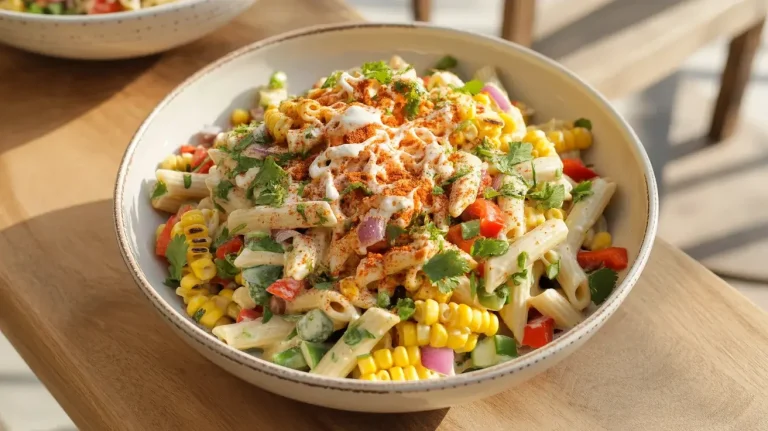Marble Rye Bread
There’s something truly nostalgic and satisfying about slicing into a freshly baked loaf of marble rye bread. The deep swirl of light and dark rye not only looks beautiful but offers a layered flavor that’s earthy, slightly tangy, and rich in texture. Whether you’re using it to build the perfect Reuben sandwich or simply to enjoy toasted with a pat of butter, this homemade version delivers on every front. Plus, with just a few pantry ingredients and simple techniques, you can recreate this classic bakery-style loaf right from your kitchen.
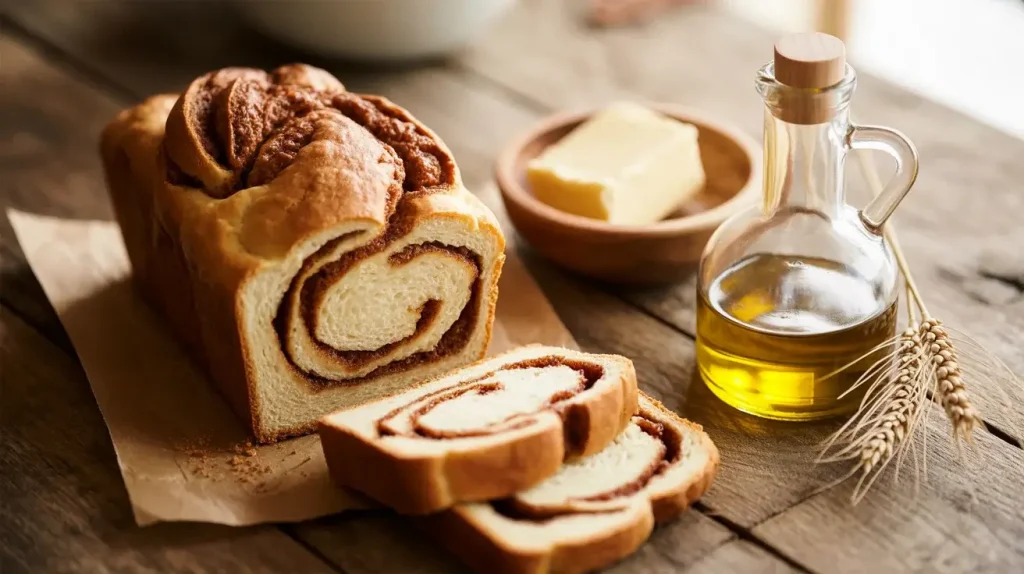
Key Advantages of Marble Rye Bread
- Rich Flavor and Texture: A delightful combination of light and dark rye dough with a subtle caraway seed flavor, offering a classic, tangy taste.
- No Additives: This homemade rye bread is made without preservatives, providing you with fresh and wholesome slices.
- Versatile Use: Perfect for sandwiches, toasted with butter, or paired with soups and stews for a satisfying meal.
- Aesthetic Swirl Design: The marble effect not only enhances its appearance but also enriches the flavor in every bite.
- Easy Recipe: Ideal for beginners, this simple recipe with straightforward instructions and tips ensures even new bakers can create bakery-quality results.
For those seeking a delicious, soft, and chewy deli-style rye bread full of flavor, this marble rye recipe is a must-try.
Ingredients for Marble Rye Bread
Creating the perfect loaf begins with the right blend of ingredients. Here’s everything you’ll need:
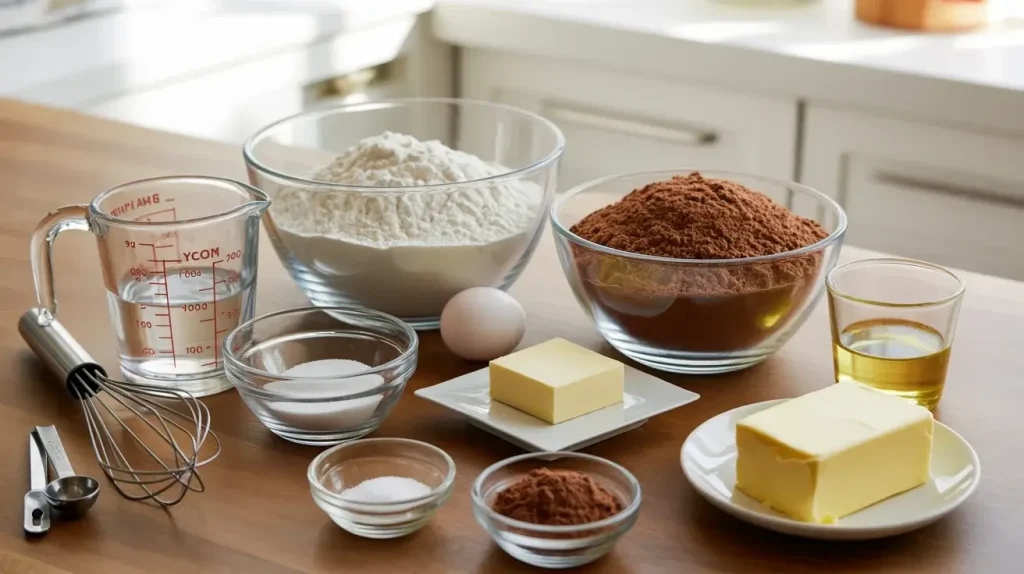
For the Dough:
- 3 cups bread flour
- 2 cups rye flour (light, medium, or dark—your choice!)
- 1½ cups warm water (around 110°F)
- 2¼ teaspoons active dry yeast
- 1 tablespoon sugar
- 2 teaspoons salt
- 1 tablespoon caraway seeds (optional, for classic rye flavor)
For the Dark Rye Dough:
- 1 tablespoon unsweetened cocoa powder
- 1 tablespoon molasses
For the Egg Wash:
- 1 egg, beaten
Ingredient Notes & Substitutions:
- Bread Flour Alternative: All-purpose flour can be used but will produce a slightly denser loaf.
- Rye Flour Types: Light for subtle flavor, dark for a stronger, bolder bite.
- Molasses Substitute: Maple syrup or honey works in a pinch for a touch of sweetness.
- Caraway Seeds: Optional, but highly recommended for that deli-style profile.
How to Make Marble Rye Bread
Let’s walk through the process, step by step, to build a bakery-worthy loaf right at home.
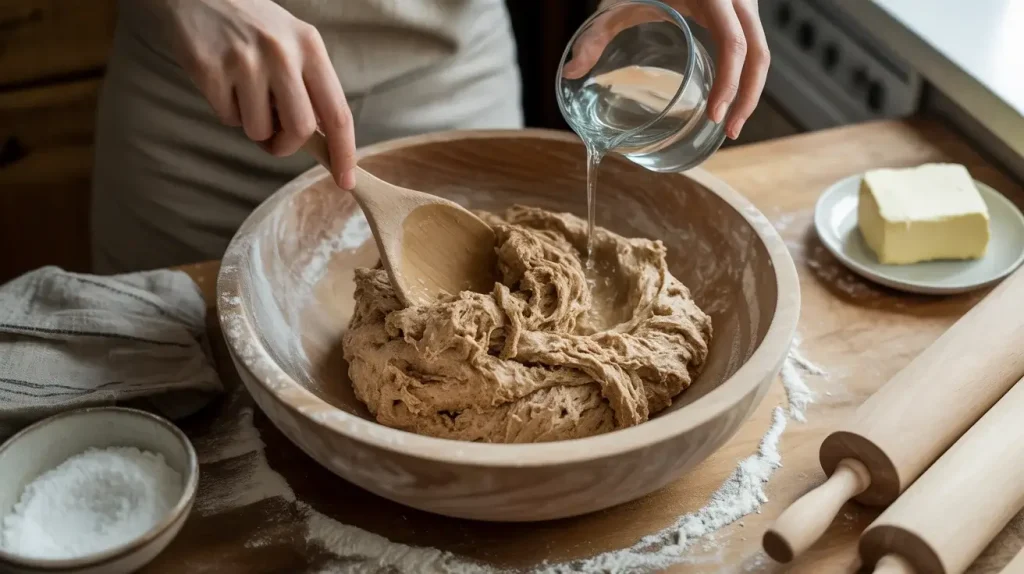
Step 1: Activate the Yeast
- In a small bowl, combine the warm water, sugar, and yeast.
- Stir and let sit for 5–10 minutes until foamy.
- If the mixture doesn’t foam, the yeast may be expired or the water too hot.
Step 2: Prepare the Doughs
We’ll make two separate doughs to get that marbled swirl.
Light Rye Dough:
- Mix half the bread flour and half the rye flour in a bowl.
- Add 1 tsp salt and half the caraway seeds (if using).
- Pour in half the yeast mixture. Stir to form a shaggy dough.
Dark Rye Dough:
- In a second bowl, mix remaining bread and rye flour, 1 tsp salt, and caraway.
- Stir in the cocoa powder and molasses.
- Add remaining yeast mixture and mix until just combined.
Step 3: Knead the Doughs
- On a floured surface, knead each dough for 8–10 minutes until smooth.
- Use the windowpane test: stretch the dough—if it doesn’t tear, it’s ready.
- You may also knead with a mixer using the dough hook (5–6 minutes on medium speed).
Step 4: Let the Dough Rise
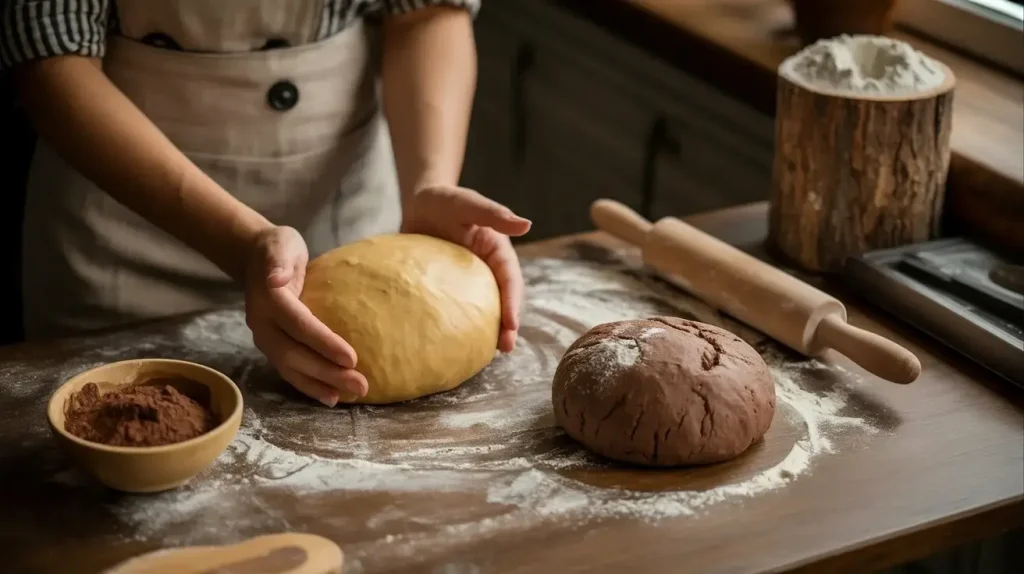
- Lightly oil two bowls and place each dough inside.
- Cover with a towel and let rise in a warm place for 1 to 1½ hours.
- Dough should double in size.
Step 5: Shape the Swirl
- Roll each dough into a 9×12-inch rectangle.
- Lay the dark dough over the light and press gently to adhere.
- Roll into a log, tuck the seam underneath.
- Place in a greased loaf pan, cover, and let rise again for 45–60 minutes.
Pro Tips and Variations
Pro Tips for Success
- Proof properly: Don’t rush either rise—patience gives better structure.
- Even layers: Roll doughs to same size and thickness for a balanced swirl.
- Keep your dough moist: Too much flour = dry bread. Knead with care.
- Check your yeast date: Always use fresh yeast for optimal rise.
Variations to Try
- Extra Rye Flavor: Use only rye flour (no bread flour) for a denser, richer loaf.
- Seed Crust: Sprinkle more caraway or sesame seeds on top before baking.
- Sweet Swirl: Add a dash of cinnamon or a swirl of honey for a unique twist.
Why You’ll Love This Bread
- Flavor Depth: The dual rye doughs—one rich with cocoa and molasses—deliver layers of nutty, sweet, and earthy tones.
- Stunning Swirl Appearance: This bread doesn’t just taste good, it looks impressive on any table.
- Versatile Usage: Ideal for sandwiches, toasts, and charcuterie boards.
- No Preservatives: Unlike store-bought loaves, this bread is free of chemicals and artificial additives.
- Beginner-Friendly: Straightforward steps make it accessible even if you’re new to bread baking.
Serving Suggestions
1. Classic Rye Toast
Slice, toast, and top with salted butter or fruit preserves. A simple pleasure.
2. Sandwiches and Reubens
Perfect for hearty deli-style sandwiches, especially Reubens with corned beef, Swiss, and sauerkraut.
3. With Soups and Stews
Dip slices into tomato soup, lentil stew, or chicken noodle—rye soaks it up beautifully.
4. Make Bread Crumbs
Dry out leftovers and pulse in a processor for rye-flavored crumbs—great for casseroles or breading.
5. Fancy Appetizer Bites
Top with cream cheese and lox or roasted veggies for an elegant party snack.
6. As a Side for Cheese Platters
Rye pairs wonderfully with aged cheddar, brie, and blue cheese—ideal for grazing boards.
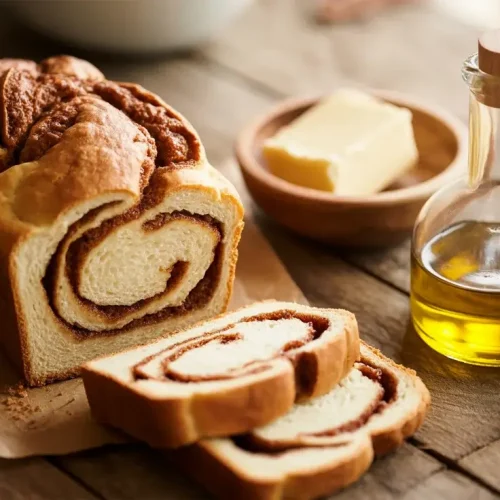
Marble Rye Bread
Ingredients
For the Dough:
- 3 cups bread flour: Gives the bread its firm shape and chewy bite.
- 2 cups rye flour: Adds that distinct earthy rye taste. Use light, medium, or dark based on your liking.
- 1½ cups warm water (around 110°F): Helps activate the yeast and blend the dough.
- 2¼ tsp active dry yeast: Makes the dough rise and creates a fluffy texture.
- 1 tbsp sugar: Feeds the yeast and brings a light touch of sweetness.
- 2 tsp salt: Balances flavor and supports the dough’s structure.
- 1 tbsp caraway seeds (optional): For that traditional rye flavor, like deli bread.
To Make the Dark Rye Layer:
- 1 tbsp cocoa powder (unsweetened): Adds a rich, dark color without changing the taste.
- 1 tbsp molasses: Gives a hint of sweetness and deep flavor to the dark swirl.
For a Shiny Crust:
- 1 beaten egg: Brushed on top for a golden, glossy finish.
Notes & Swaps
- Bread flour: All-purpose flour works too, but bread flour gives better structure.
- Rye flour: Choose light for a milder taste or dark for a stronger rye flavor.
- Molasses: No molasses? Use honey or maple syrup instead.
Instructions
Step 1: Wake Up the Yeast
- Mix warm water (about 110°F), sugar, and yeast in a small bowl. Let it rest for 5–10 minutes until it gets foamy. If it doesn’t foam, the yeast might be old or the water wasn’t the right temperature.
Step 2: Make Two Doughs – Light and Dark
- For the light dough, mix half the bread flour, rye flour, salt, and caraway seeds (if using), then add half the yeast mixture and stir.
- For the dark dough, do the same with the rest of the flours and salt, but also add cocoa powder and molasses before adding the remaining yeast mixture.
Step 3: Knead Both Doughs
- Knead each dough on a floured surface for 8–10 minutes until smooth. If sticky, add a little more flour. You can also use a stand mixer to save time (about 5–7 minutes on medium speed).
Step 4: First Rise
- Place each dough in a greased bowl, cover with a damp towel, and let rise in a warm place until doubled—about 1 to 1.5 hours.
Step 5: Shape the Marble Swirl
- Roll out both doughs into rectangles, stack the dark over the light, press gently, and roll them up into a log. Place seam-side down in a greased pan and let rise again for 45–60 minutes until puffy.
Notes
Nutrition Information (Per Serving):
- Calories: 160 kcal
- Fat: 1.5g
- Protein: 5g
- Carbs: 28g
- Fiber: 3g
- Sugar: 3g
- Sodium: 200mg
- Cholesterol: 0mg
Conclusion
Homemade marble rye bread is more than a loaf—it’s a showcase of flavor, texture, and craft. With its striking swirl and soft crumb, it elevates everything from breakfast to dinner. Whether you’re new to baking or a seasoned bread lover, this recipe will be one you return to again and again.
FAQs
1. Can I make this bread without the rye flour?
You can, but it will lose the signature flavor. Use all-purpose flour if needed.
2. How do I store the marble rye bread?
Store in an airtight container for 3–4 days. Freeze slices for longer shelf life.
3. Can I double the recipe?
Yes! Just be sure to knead and bake in batches or use two pans.
4. What can I use this bread for besides sandwiches?
It’s great for toast, stuffing, croutons, and even savory bread puddings.
5. Why does my bread have a heavy or dense texture?
Most likely due to under-proofing or over-kneading. Be gentle and patient.
6. Can I add other flavorings to the bread?
Yes! Garlic powder, dried herbs, or more seeds can all add depth.





